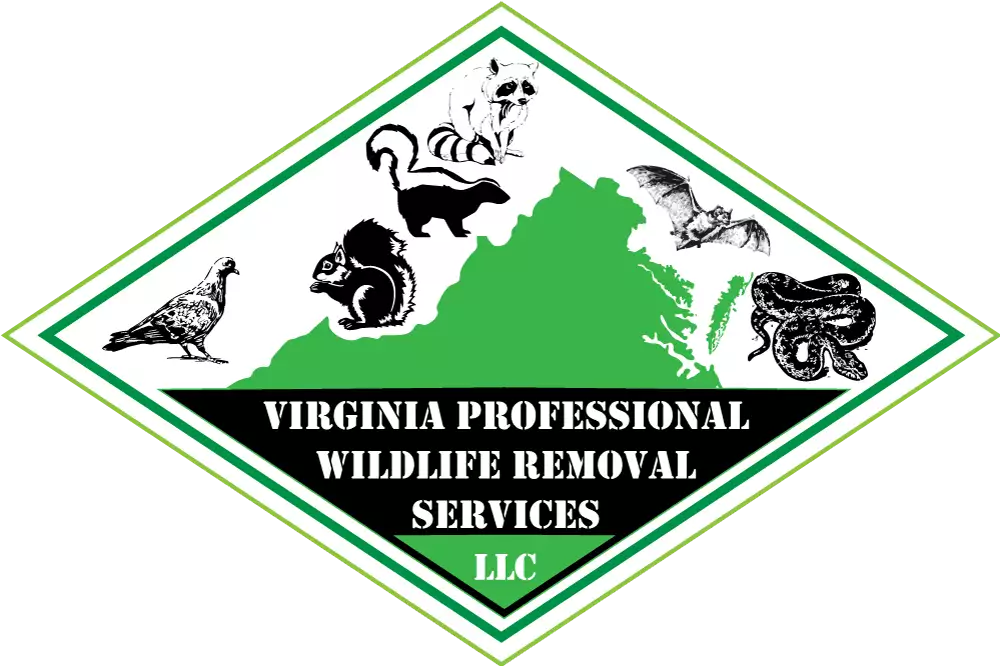Flying Squirrel Trapping & Removal
A full-service animal wildlife trapping, removal and pest control company - Licensed and Insured!
SERVICES PROVIDED BY VIRGINIA PROFESSIONAL WILDLIFE REMOVAL SERVICES, LLC.

Flying Squirrel Trapping & Removal
A full-service animal wildlife trapping, removal and pest control company - Licensed and Insured!
SERVICES PROVIDED BY VIRGINIA PROFESSIONAL WILDLIFE REMOVAL SERVICES, LLC.

Richmond & Charlottesville VA – Flying Squirrel Trapping & Removal
(804) 457-2883
Virginia Professional Wildlife Removal Services, LLC. | Licensed & Insured
Providing Both Residential & Commercial Flying Squirrel Trapping & Capture Services
We are your local experts for nuisance flying squirrel trapping, flying squirrel removal, flying squirrel control, flying squirrel exclusion and flying squirrel damage repairs to individuals, businesses, and municipalities throughout Virginia. Unlike grey squirrels, flying squirrels can be extremely difficult to exterminate and carry a host of diseases and parasites. In the Winter, there population size increases as they move into homes and business to share shelter and food. One of our wildlife control technicians trapped and removed over 60 flying squirrels from a single home last Winter.
At Virginia Professional Wildlife Removal Services we are constantly striving to advance our education so that we may serve you better.
Virginia Professional Wildlife Removal Services has the knowledge and experience to resolve your nuisance flying squirrel problem quickly and humanely. Call us today.
Geographic Range
Southern flying squirrels (Glaucomys volans) are found in southeastern Canada, the eastern United States, and south as far as Mexico and Honduras.
Habitat
Southern flying squirrels are found in woodlands. They seem to prefer seed-producing hardwoods, particularly maple, beech, hickory, oak, and poplar. They are also found in mixed conifer/deciduous forests.
Physical Description
Flying squirrels are easily distinguished by the “gliding membrane”, a flap of loose skin that extends from wrist to ankle. The loose skin along the side of the body is supported by cartilaginous spurs on the wrists and ankles. The soft fur on the back and tail is grey with varying amounts of grey tinge; the belly is white. The tail is dorso-ventrally flattened. The eyes are very large, probably related to the nocturnal habits and the visual requirements of gliding. Total length is 21.1 to 25.7 cm and tail length is 7.9 to 12 cm.
Reproduction
Breeding interval – Southern flying squirrels breed twice each year.
Breeding season – Breeding occurs from January to April and from June to August.
Number of offspring – 1 to 6; avg. 2.50
Gestation period – 40 days (average)
Time to independence – 120 days (average)
Age at sexual or reproductive maturity (female) – 9 months (low); avg. 12 months
Age at sexual or reproductive maturity (male) – 12 months (average)
Little is known about the mating system in southern flying squirrels. Males and females do not associate much beyond breeding.
Females are polyestrous and typically mate twice per year. Births thus have two peaks, from February to May and from July to September. There is, however, some geographic variation in the timing of births. The gestation period is 40 days. Litters can range from one to six young, though two or three is most common. The young are weaned at 65 days (an unusually long time for an animal this small) and are independent at 120 days. Maturity is usually attained at twelve months, though ages as young as nine months have been reported.
Young flying squirrels are born naked and helpless in their mother’s nest. Their ears open at 2 to 6 days old, they develop some fur by 7 days old, and their eyes open by their 24th or 30th day of life. Females care for their young in the nest and nurse them for 65 days, which is an unusually long time for an animal of this size. The young become independent by 4 months old unless they are born later in the summer, in which case they usually overwinter as a family.
Lifespan/Longevity
Extreme lifespan (captivity) – 10 years (high)
Typical lifespan (wild) – 5 – 6 years
Average lifespan (captivity) – 12 years
Southern flying squirrels in the wild can live to 5 or 6 years old. In captivity they have been known to live up to 10 years. Most flying squirrels probably die in their first year of life.
Behavior
Activity is primarily nocturnal. Flying squirrels are often seen in pairs, and can be gregarious. During winter, groups of 10 to 20 individuals are sometimes found in dens in hollow trees. Females have been reported to be territorial and to defend nest sites during the mating season. Flying squirrels live in hollow trees, deserted woodpecker holes, and in buildings and bird boxes. Nests are made of soft materials like shredded bark, dry leaves, moss, feathers and fur.
Flying squirrels are not true fliers but gliders. They leap from high vantages and spread the arms and legs, stretching the loose skin of the body into an efficient sail. As they approach a landing, they raise the tail to change the course of the glide upwards and extend the limbs to use the skin as a parachute. Upon landing, they quickly move to the other side of the tree to avoid predators that may have detected and followed them during the glide. They are agile in the air, avoiding obstacles like trees and even making 90 turns. From a height of 18 meters they can glide about 50 meters; maximum glide is about 80 meters.
Home Range
Home ranges in both sexes range in size from about .5 to about 1.5 hectares. Male ranges overlap; female ranges do not overlap with each other or those of males.
Communication and Perception
Southern flying squirrels have very large eyes in order to see well in low light. They have keen senses of smell, touch, vision, and hearing. They probably communicate about reproductive condition through chemical cues. Vibrissae on the cheeks, chin, and ankles help them in navigating at night. They are relatively quiet but may use some vocalizations in social communication.
Food Habits
Southern flying squirrels are omnivores and eat a wide range of foods, including nuts, acorns, seeds, berries, fruit, moths, junebugs, leaf buds, bark, eggs and young birds, young mice, insects, carrion, and fungus. They are especially fond of hickory nuts and acorns; one sure sign of the presence of this species is piles of gnawed hickory nuts at the base of large hickory trees. They will store food for winter use.
Predation
Known predators: hawks, owls, domestic cats, bobcats, weasels, raccoons snakes
Flying squirrels avoid predators by being nocturnal and by being fast and agile in the trees and during their glides. They are alert for predators constantly. The most successful predators on flying squirrels are able to fly, such as hawks and owls, or can climb well, such as domestic cats, bobcats, weasels, raccoons, and climbing snakes.
Ecosystem Roles
Flying squirrels consume large numbers of the fruiting bodies of subterranean fungi, dispersing the spores in their feces. The mycelia of these fungi form close associations with the roots of many species of trees and are believed to be essential for tree growth and maintenance. They also disperse the seeds of hardwood trees.
Economic Importance for Humans: Negative
Flying squirrels are sometimes pests when they make nests in houses.
Economic Importance for Humans: Positive
Flying squirrels play important ecosystem roles in hardwood forests. They are also sometimes kept as pets.
Health Concerns
Exposure to Southern Flying Squirrels has been linked to cases of epidemic typhus in humans. Typhus spread by flying squirrels is known as “sylvatic typhus” and the Centers for Disease Control and Prevention has documented a total of 39 such cases in the U.S. from 1976 to 2001. The squirrel acts as host to the Rickettsia prowazekii bacteria and transmission to humans is believed to occur via lice or fleas.
Other Comments
Southern flying squirrels are often the most common squirrel in hardwood woodlands and suburban areas. Because they are nocturnal and seldom seen, most people don’t recognize that they live with flying squirrels.
Source: Fox, D. and M. Mulheisen. 1999. “Glaucomys volans” (On-line), Animal Diversity Web. Accessed October 23, 2011 http://animaldiversity.ummz.umich.edu/site/accounts/information/Glaucomys_volans.html.
Our Service Areas in Virginia
We provide wildlife removal, wildlife control, animal removal, animal control, animal trapping and pest control services throughout Virginia including the following counties, cities and towns: Afton, Albemarle County, Alexandria, Amelia County, Annandale, Arlington, Ashburn, Ashland, Barboursville, Bellwood, Belmont, Bensley, Bermuda Hundred, Bon Air, Boyd Tavern, Brandermill, Bumpass, Burke, Central VA, Centreville, Chamberlain, Charlottesville, Chesapeake, Chester, Chesterfield County, Colonial Heights, Crozet, Cuckoo, CVille, Dale City, Doswell, Dumbarton, Earlysville, East Highland Park, Enon, Ettrick, Fairfax, Fair Oaks, Ferncliff, Fluvanna County, Fredericksburg, Genito, Glen Allen, Glenora, Goochland County, Gordonsville, Gum Spring, Hadensville, Hampton, Hampton Park, Hanover County, Harrisonburg, Harrogate, Hening, Henrico County, Highland Springs, Hopewell, Innsbrook, Jefferson Davis, Kents Store, Keswick, Lake Anna, Lake Monticello, Lake Ridge, Lakeside, Laurel, Leesburg, Lewiston, Lignum, Locust Grove, Louisa County, Maidens, Manakin, Manakin-Sabot, Manassas, Manchester, McLean, Montrose, Motoaca, Meadowbrook, Mechanicsville, Midlothian, Mineral, Moseley, Newport News, Norfolk, North Courthouse, Northern Virginia, North Garden, NoVA, Oilville, Orange County, Palmyra, Pantops, Petersburg, Portsmouth, Powhatan County, Reams, Reston, Richmond, Richmond County, Robious, Rockville, Rockwood, RVA, Salisbury, Sandston, Sandy Hook, Scottsville, Shannon Hill, Short Pump, South Rockwood, Spring Run, Staunton, Stoney Point, Suffolk, Tidewater, Troy, Tuckahoe, Va, Varina, Virginia, Virginia Beach, Waynesboro, Williamsburg, Winchester, Winterpock, Woodlake, Wyndham, and the surrounding areas of Virginia.
Please Complete Our Simple Contact Form Below:
VPWRS Can Solve Your Problems!
- Scratching Noises In Your Attic, Walls, Or Crawlspace?
- Unwanted Animal Wildlife In Your Home, Business or Property?
- Bats In Your Attic?
- Birds In Your Dryer And Bathroom Vents?
- Problem Bird Or Bat Infestation?
- Animals In Your Chimney Or Fireplace?
- Digging In Your Lawn Or Under Your House, Deck Or Garage?
- Dead Animal Problems?
- Animal Odor Problems?
- Chewing Sounds In Your Attic Or Crawl Space?
- Animals Damaging Your Wiring, Insulation, Fascia, Soffits, And The Wood In Your Home?
- Animal Feces Removal?
- Attic Restorations And Clean-Up Needed?
VPWRS Extensive Services
Virginia Professional Wildlife Removal Services provides nuisance wildlife removal, animal control, predator control, pest control, nuisance wildlife exclusion, and wildlife clean-up services.
We have experience handling bats, beavers, birds, Canada geese, chipmunks, coyotes, deer, foxes, groundhogs, mice, moles, raccoons, rats, opossums, otters, skunks, squirrels, snakes, voles, muskrats, bobcats, Copperhead snakes, pigeons, and other species of Virginia wildlife.
We operate our business within accepted industry standards and best practices, and in accordance with local, state, and federal laws.
Our connections on the ground and the net.
CONTACT INFO
Tel: (804) 457-2883 or Toll-Free at (877) 828-3878
DIRECT MESSAGE
FOLLOW US
Facebook
BBB Profile
Angies List
Instagram
